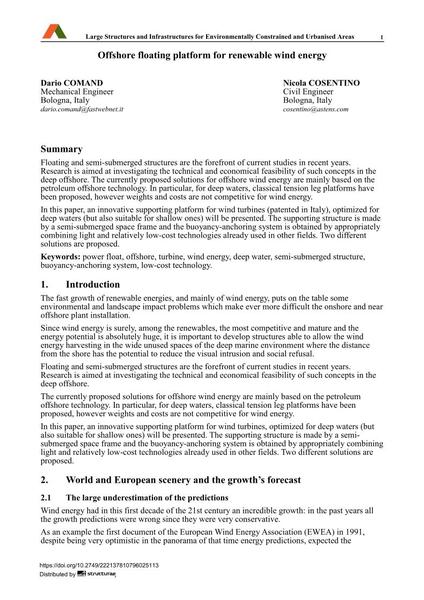Offshore floating platform for renewable wind energy

|
|
|||||||||||
Bibliografische Angaben
| Autor(en): |
Dario Comand
Nicola Cosentino |
||||
|---|---|---|---|---|---|
| Medium: | Tagungsbeitrag | ||||
| Sprache(n): | Englisch | ||||
| Tagung: | IABSE Symposium: Large Structures and Infrastructures for Environmentally Constrained and Urbanised Areas, Venice, Italy, 22-24 September 2010 | ||||
| Veröffentlicht in: | IABSE Symposium Venice 2010 | ||||
|
|||||
| Seite(n): | 394-395 | ||||
| Anzahl der Seiten (im PDF): | 8 | ||||
| Jahr: | 2010 | ||||
| DOI: | 10.2749/222137810796025113 | ||||
| Abstrakt: |
Floating and semi-submerged structures are the forefront of current studies in recent years. Research is aimed at investigating the technical and economical feasibility of such concepts in the deep offshore. The currently proposed solutions for offshore wind energy are mainly based on the petroleum offshore technology. In particular, for deep waters, classical tension leg platforms have been proposed, however weights and costs are not competitive for wind energy. In this paper, an innovative supporting platform for wind turbines (patented in Italy), optimized for deep waters (but also suitable for shallow ones) will be presented. The supporting structure is made by a semi-submerged space frame and the buoyancy-anchoring system is obtained by appropriately combining light and relatively low-cost technologies already used in other fields. Two different solutions are proposed. |
||||
| Stichwörter: |
Windenergie
|
||||
